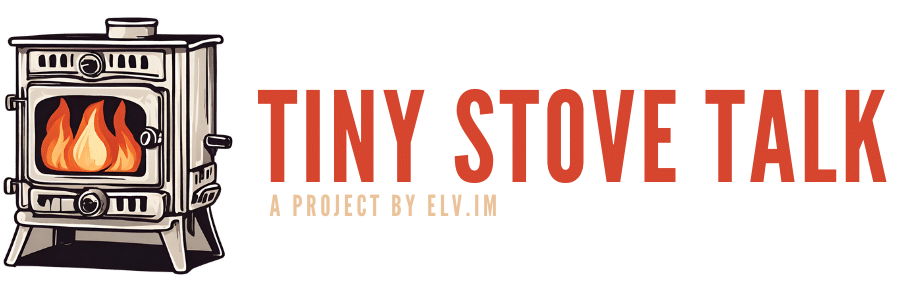Wood stoves have long been hailed as an efficient and cost-effective way to heat homes. With rising gas and electricity prices, many people are turning to wood-burning stoves as a reliable source of warmth. However, starting a fire in a wood stove can be a challenge for some.
In this comprehensive guide, we will explore the most effective techniques for starting a fire in a wood stove, ensuring optimal efficiency, safety, and longer burn times.
A fire safety checklist. Be sure to follow this, it’s important.
| Safety Item | Description | Frequency of Check/Replacement | Importance Rating | Last Checked Date |
|---|---|---|---|---|
| Chimney Cleaning | Removal of soot and creosote build-up | Annually | High | 2024-01-01 |
| Fire Extinguisher | Check for expiration and pressure | Every 5 years (Monthly check) | High | 2023-06-15 |
| Smoke Detector | Test functionality and battery | Monthly Test, Yearly Battery Replacement | High | 2024-01-10 |
| Fire Escape Plan | Plan and practice routes and meeting points | Review and practice biannually | High | 2023-12-01 |
| Stove and Hearth Area | Inspect for any cracks, damage, or hazards | Before heating season | Medium | 2023-09-20 |
| Carbon Monoxide Detector | Ensure proper operation and battery life | Monthly Test, Yearly Battery Replacement | High | 2024-01-05 |
| Fireproof Mats and Screens | Check for damage or wear | Annually | Medium | 2023-10-10 |
| Emergency Contact List | Update and make accessible | Annually | Low | 2023-08-15 |
| First Aid Kit | Check supplies and replenish | Every 6 months | Medium | 2024-01-01 |
| Fire Safety Training | Attend courses or online training | Every 2 years | Low | 2023-07-12 |
Understanding Wood Stoves
Wood stoves are available in various designs and sizes, but they all function by burning firewood to generate heat through combustion. The construction materials of wood stoves can be either steel or cast iron. Steel stoves heat up quickly but cool down fast, while cast iron stoves take longer to heat up but retain heat for a longer duration. Understanding the basic components and materials of wood stoves is crucial for efficient fire starting.
Preparing for a Successful Fire
Before igniting a fire in your wood stove, it is essential to take certain preparatory measures to ensure safe operation and increased efficiency. One crucial aspect is proper airflow. Opening the damper on the wood stove is the first step to create the necessary airflow and prevent smoke from entering the room. Additionally, if your stove has glass doors, allowing them to reach room temperature by opening them prior to starting the fire is recommended.
Comparison of Different Fire-Starting Materials: my favorite is kindling; it creates less smoke and more heat.
| Material Type | Burn Time | Heat Output | Ease of Use | Environmental Impact |
|---|---|---|---|---|
| Newspaper | Short | Low | High | Varies |
| Kindling | Medium | Medium | Medium | Low |
| Fire Starters | Long | High | High | Varies |
Checking and Reversing the Draft
Checking the draft is an important step to ensure that the airflow is moving up the chimney. By lighting a match and observing the direction of the flame, you can determine the draft’s movement. If the flame moves downward, it is necessary to reverse the draft before starting the fire. Using starter blocks or commercial wax logs can help reverse the draft and create an upward flow of air.
Using Quality Fire Starters
To start a fire in your wood stove, having the right kindling and fire starters is crucial. While newspapers are a common choice for kindling, alternative options such as fatwood, fire starter squares, and cedar fire starters can be more effective. These alternatives aid in getting the fire going and reduce the risk of excessive smoke production.
Arranging the Firewood
Properly arranging the firewood is essential for a successful and efficient fire. If you’re not using a wood grate, a recommended method is to place two large logs parallel to each other, with a cross-bar on top, creating a solid base for the fire. Crumpled newspaper is placed below the kindling, which is then lit to start the fire. For those using a wood grate, the kindling is placed on the grate, and the firewood is stacked on top in a crisscross pattern.
Firewood Types and Their Characteristics:
| Wood Type | Burn Time | Heat Output | Smoke Production | Availability |
|---|---|---|---|---|
| Oak | Long | High | Low | Common |
| Pine | Short | Medium | High | Common |
| Birch | Medium | Medium | Medium | Common |
Selecting the Right Firewood
The type of firewood you choose can significantly impact the performance and efficiency of your wood stove. It is essential to burn only seasoned, dry, and hardwood to ensure longer burn times, hotter fires, and brighter flames. Avoid using pine or other sap-heavy woods, as they can lead to creosote buildup and potentially cause chimney fires. Opt for hardwoods such as ash, oak, beech, birch, or hickory for optimal results.
Monitoring and Adjusting the Fire
Once the fire is successfully started, it is important to monitor and adjust it for optimal performance. Pay close attention to the smoke produced during the first half hour. A well-drafted fire should produce minimal smoke. To provide the fire with sufficient oxygen, leave the wood stove door slightly open for a short period when the fire is first started. However, be cautious not to leave the door open for an extended period to prevent excessive heat loss.
Extending the Burn Time
To maximize the burn time of your wood stove, there are several techniques you can employ. Using smaller, well-seasoned pieces of firewood can help prolong the burn time compared to larger logs. Additionally, adjusting the air intake and damper settings can help control the rate of combustion and extend the burn time. Experimenting with different strategies will help you find the optimal balance between heat output and burn time.
Proper Ash Disposal
After the fire has burned out, it is important to dispose of the ashes properly. Even when the ashes appear cold, they may still contain hidden embers that can reignite. Safely handle the ashes by placing them in a metal bucket and ensuring it is located on a non-flammable surface. Do not dispose of the ashes in your regular trash bin, as it can pose a fire hazard. Instead, transfer them to a designated ash container and allow them to cool completely before properly disposing of them.
Cleaning and Maintenance
Regular cleaning and maintenance are essential for the optimal performance and safety of your wood stove. Removing ashes and soot buildup from the firebox and chimney should be done regularly to prevent blockages and ensure efficient airflow. It is also advisable to have your chimney professionally inspected and cleaned annually to minimize the risk of chimney fires and ensure proper ventilation.
Safety Precautions
When operating a wood stove, it is crucial to prioritize safety. Never leave the stove unattended while a fire is burning, and keep flammable materials at a safe distance from the stove. Install smoke and carbon monoxide detectors in the vicinity of the wood stove to ensure early detection of any potential hazards. Familiarize yourself with fire safety protocols and have an appropriate fire extinguisher readily available.
Additional Tips and Considerations
-
Use a moisture meter to ensure your firewood is properly seasoned.
-
Consider investing in a stove with advanced features, such as an automatic combustion control system.
-
Educate yourself on local regulations and restrictions regarding wood stove usage.
-
Seek professional assistance if you encounter any issues or difficulties with your wood stove.
In conclusion, starting a fire in a wood stove requires proper preparation, selection of quality fire starters, and arranging the firewood in a strategic manner. By following these effective techniques, you can ensure optimal efficiency, longer burn times and a cozy, warm atmosphere in your home.
Remember to prioritize safety and perform regular maintenance to maximize the performance and longevity of your wood stove. Stay warm and enjoy the benefits of a well-tended fire in your wood stove throughout the colder months.



Comments